1. Formal Dining Rooms
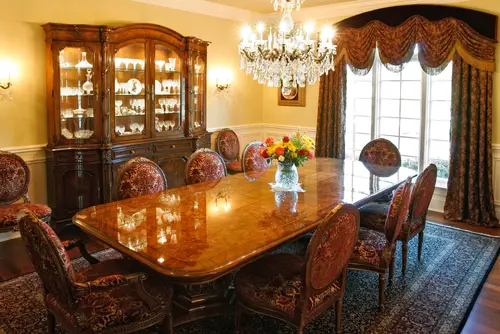
There was a time when nearly every new home came with a dining room set aside for sit-down dinners, complete with china cabinets and heavy wood furniture. Families used these rooms for Sunday meals, holidays, and special occasions. Today, many houses are built with open layouts where the kitchen island does most of the hosting. A separate dining room feels like a luxury for people with extra square footage.
The shift came as lifestyles became more casual and family meals moved into multipurpose spaces. Developers noticed that most dining rooms sat unused for 300 days a year, so they began omitting them. Now, when you do see one, it’s usually in a larger home marketed as “upscale.” What was once ordinary has become a selling point.
2. Wraparound Porches
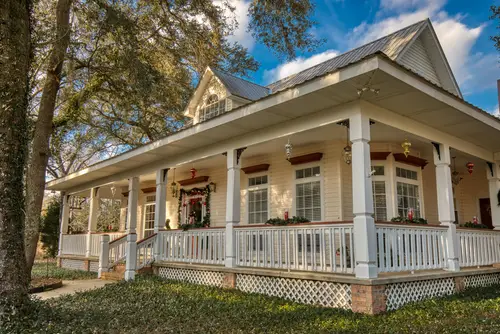
Once upon a time, the front porch wasn’t just an architectural flourish—it was the social hub of the neighborhood. People sat outside in the evenings, catching breezes before air conditioning became widespread. Kids played on the steps, and neighbors stopped by to chat without knocking. It was a built-in community feature.
As lifestyles got busier and AC pulled everyone indoors, porches lost their purpose. Builders swapped them for back decks or patios that offered more privacy. Now, when you see a big wraparound porch, it signals craftsmanship and nostalgia. It’s less a default design and more a nod to luxury living.
3. Built-In Bookcases
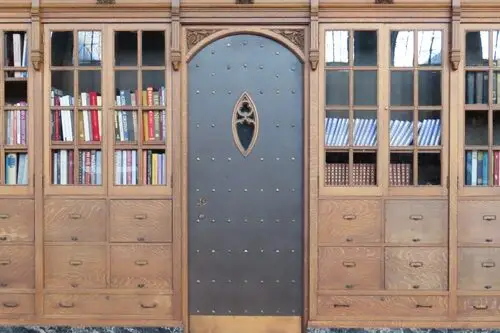
Built-in shelving was a staple in mid-century homes, giving families a place to store encyclopedias, photo albums, and the occasional set of World Book. These weren’t just practical—they added character and made a home feel rooted. The craftsmanship meant houses came with custom carpentry as part of the deal. Today, it feels almost extravagant to have permanent shelves built into the walls.
Cheap, flat-pack furniture has largely replaced this kind of detail. Homebuilders stripped out custom features to save costs and keep layouts flexible for buyers. But when you walk into a home with original built-ins, it feels immediately more substantial. They’ve gone from standard issue to something buyers gush over.
4. Pocket Doors
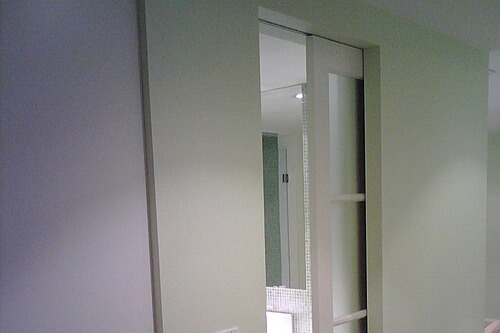
Pocket doors were once a clever way to save space and add a touch of elegance to a home. Sliding neatly into the wall, they separated parlors, dining rooms, or bedrooms when needed. They were common in homes built before the mid-20th century, especially in Victorian and Craftsman styles. Today, they’re far from standard.
As construction methods modernized, pocket doors fell out of favor because they’re trickier to install and repair. Builders preferred the simplicity of swinging doors, even though they take up more space. Now, when you see a pocket door, it’s either in a historical home or an expensive renovation. Something practical became an architectural treat.
5. Cedar Closets
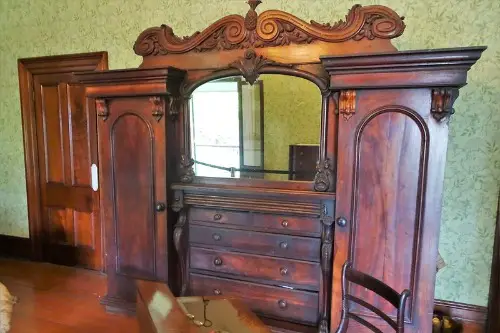
In older homes, a cedar-lined closet wasn’t just a perk—it was insurance against moths and mildew. Families stored their best wool coats, linens, and seasonal clothing there without worry. The scent of cedar was practically part of the American household. It was a small luxury built right into everyday life.
With the rise of synthetic fabrics and chemical mothballs, cedar closets lost their necessity. Builders cut costs by lining closets with drywall instead. Today, finding cedar in a closet feels like uncovering a hidden treasure. It’s less about function and more about old-school elegance.
6. Basement Bars
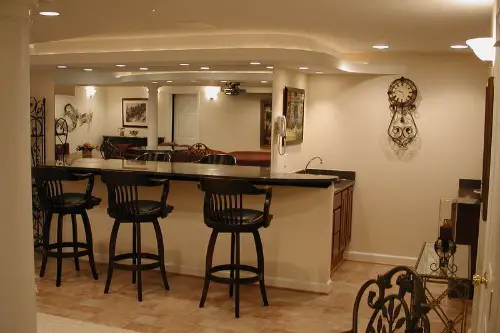
From the 1950s through the 1970s, no suburban rec room was complete without a bar tucked into the basement. Parents entertained friends over cocktails while kids played nearby. It was part of the golden age of home entertaining, when people socialized at home instead of heading out. The bar wasn’t just a feature—it was a cultural marker.
As drinking culture shifted and basements became catch-all storage spaces, those bars vanished. Builders didn’t see the need to include them in new homes. Now, if you come across one, it feels retro and luxurious, a nod to mid-century charm. Some buyers even restore them as conversation pieces.
7. Servant Staircases
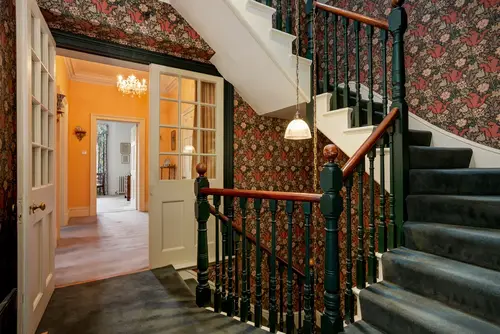
In large homes built before World War II, it was common to find narrow, hidden staircases for servants. They allowed household staff to move around without disturbing the main living areas. Even middle-class homes sometimes included them as part of the floor plan. These stairs were practical, not fancy.
As domestic help became rare in most households, those staircases lost their purpose. Builders stopped including them, and many were torn out or closed off in renovations. Today, they’re a quirky feature mostly seen in historic properties. Spotting one feels like stepping into another era.
8. Dumbwaiters
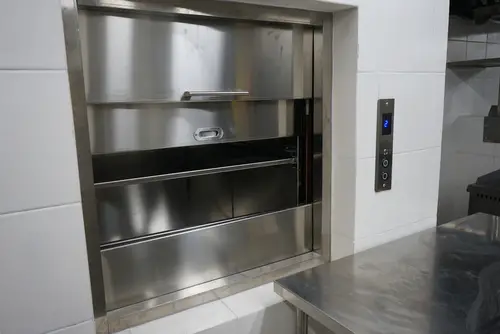
A century ago, dumbwaiters were an ingenious way to shuttle food, laundry, or coal between floors. Even modest middle-class homes might have had one built into the wall. They saved time and effort in an age before modern appliances. It was a small but clever piece of home engineering.
Once technology like dishwashers and laundry machines came along, dumbwaiters seemed redundant. Builders dropped them in favor of simpler layouts. Today, if you see one still functioning, it feels like a quirky luxury—something you’d expect in a boutique hotel rather than a house. They’ve gone from practical tool to whimsical detail.
9. Large Pantries

For much of the 19th and early 20th centuries, pantries were essential storage rooms. They housed not just food but also the equipment needed for home canning and baking. Families often bought staples in bulk, so they needed the extra space. A walk-in pantry wasn’t special—it was expected.
As refrigeration improved and grocery shopping became more frequent, pantries shrank or disappeared. Kitchens were streamlined, and extra rooms were sacrificed for living space. Today, the walk-in pantry is back, but it’s sold as a premium feature. What used to be practical storage is now marketed as luxury convenience.
10. Attic Bedrooms
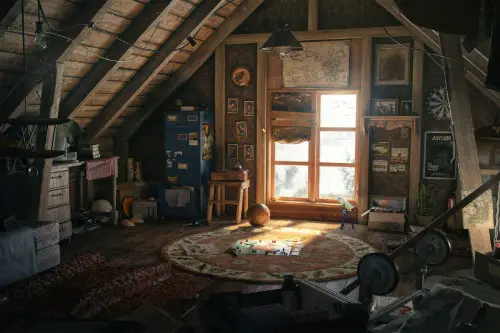
In older homes, especially in the Northeast and Midwest, attics were often finished out as spare bedrooms. They gave growing families extra space without costly additions. Kids, boarders, or even hired help might sleep there. These spaces were humble but common.
With modern building codes and HVAC systems, attic conversions fell out of favor. The sloped ceilings and limited insulation made them less appealing. Today, when finished properly, an attic bedroom feels like a charming, boutique-style hideaway. What was once practical overflow is now a designer’s dream.
11. Outdoor Kitchens (Old-School Style)

Before modern grills and patio sets, many farmhouses had full-blown outdoor kitchens. Families used them in the summer to keep the main house cooler and reduce fire risk. Cooking outside wasn’t glamorous—it was survival. Stoves, sinks, and prep areas were all part of the setup.
As air conditioning became widespread, these spaces became unnecessary. Cooking migrated indoors year-round, and outdoor kitchens vanished. Now, luxury homes boast high-end versions with stone pizza ovens and built-in grills. Ironically, what was once practical has come back as a status symbol.
12. Sleeping Porches
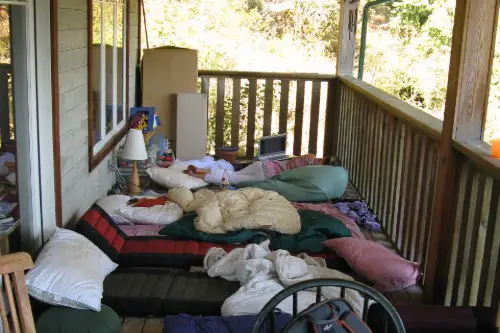
In an era before widespread air conditioning, many homes included a screened sleeping porch. Families dragged mattresses out there in the summer to escape sweltering bedrooms. It was a normal part of the architecture in much of the country. Some houses even had multiple porches for this exact purpose.
Once AC units became affordable, sleeping porches disappeared. Builders saw no reason to waste square footage on a seasonal space. Today, when you stumble across one, it feels romantic and rare. It’s an old-fashioned feature that now screams luxury retreat.
13. Stained Glass Windows
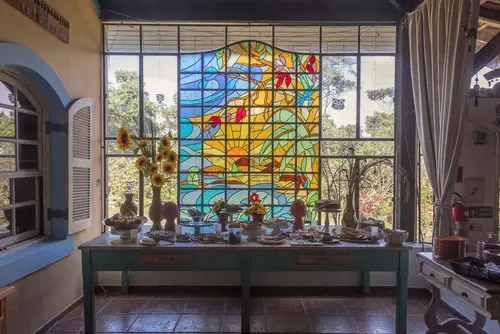
At the turn of the 20th century, stained glass windows weren’t just for churches—they were standard in many middle-class homes. They added personality and filtered light in striking ways. Factories produced affordable versions, so they weren’t seen as high-end. They were simply decorative details people expected.
As tastes shifted toward minimalism and costs rose, builders abandoned stained glass. Plain windows became the default. Now, when stained glass shows up in a house listing, it’s highlighted as a premium feature. What was once commonplace now feels like art.
14. Laundry Chutes
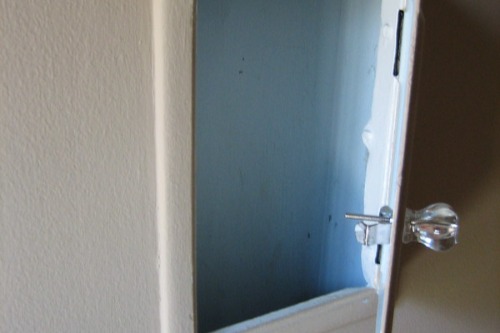
Laundry chutes were a practical solution in multi-story homes, letting families drop dirty clothes straight into the basement. They saved trips up and down the stairs and were often included in houses built through the mid-20th century. For busy households, they were a small but handy convenience. They were so common, no one thought twice about them.
Concerns about safety and building codes made them less common over time. Modern laundry setups also moved to main floors or even bedrooms, reducing the need. Today, if you see a laundry chute, it feels like a quirky luxury. It’s one of those “why don’t we still do this?” features that sparks nostalgia.
This post 14 Home Features That Were Once Standard and Are Now Luxury Oddities was first published on American Charm.


